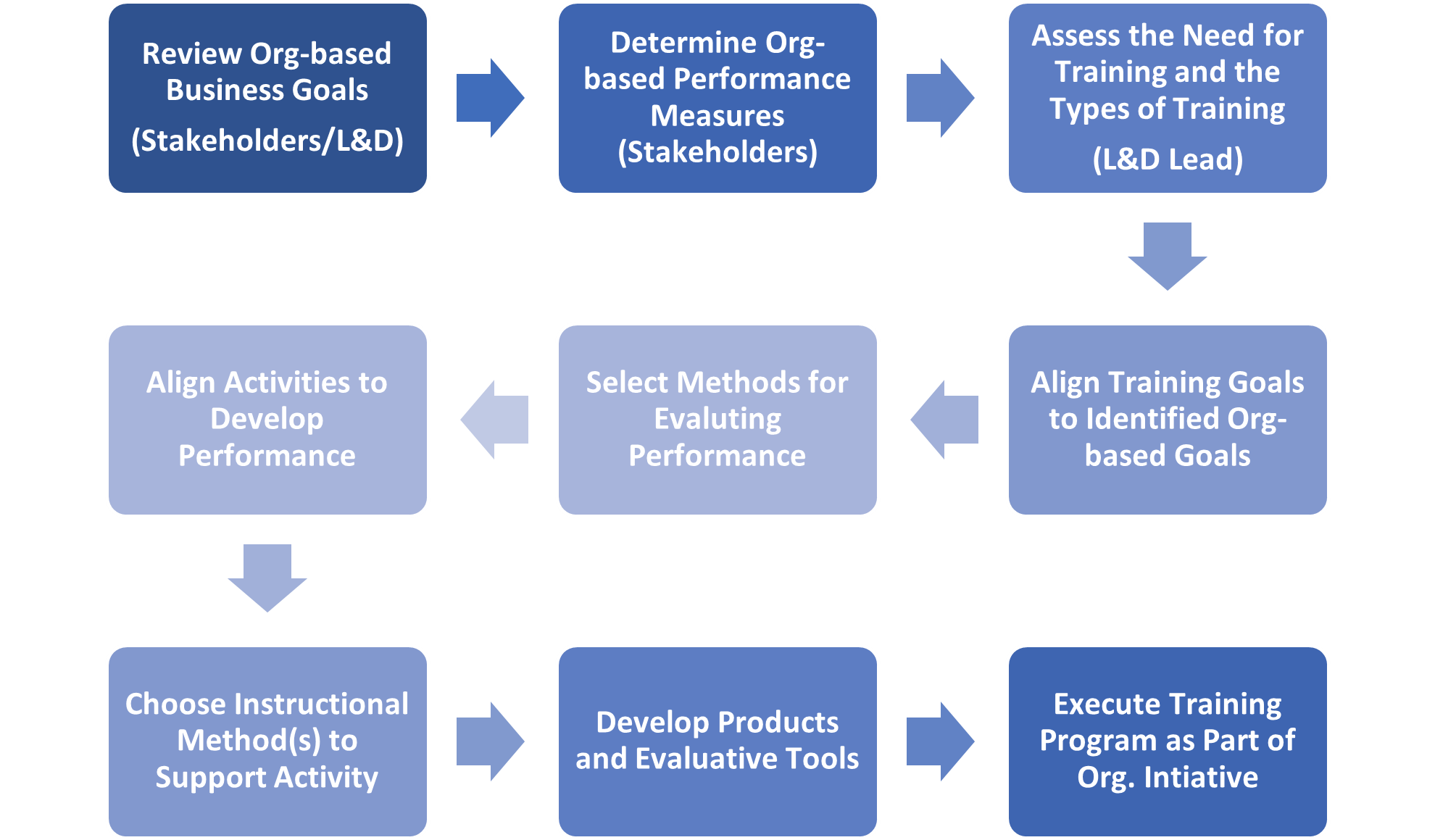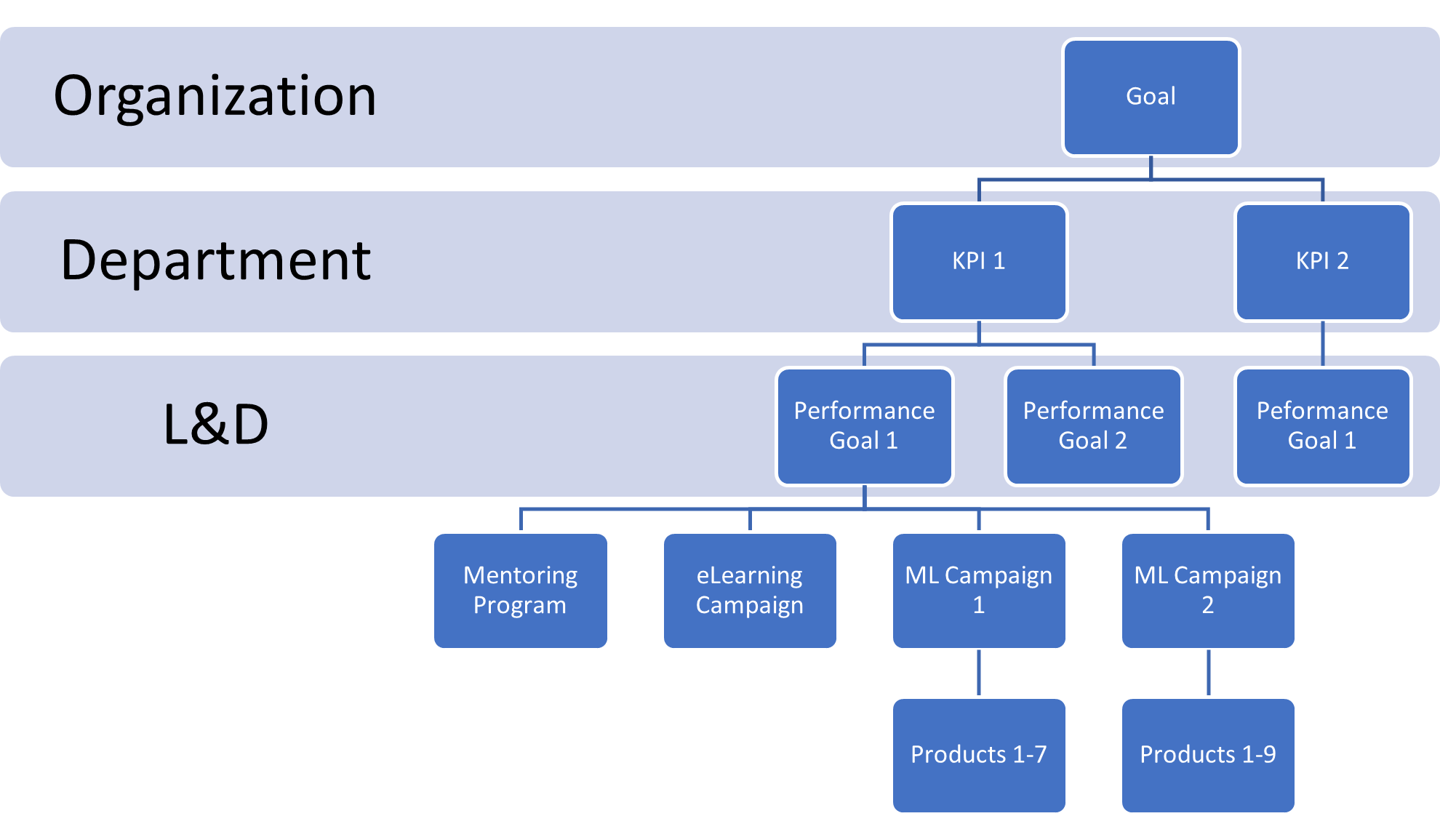In “Infographics as Job Aids: Design for Showing, Not Knowing,” I highlighted the use of microlearning design principles through an infographic-based microlearning campaign. This contextual example demonstrated how a carefully designed microlearning campaign can help reduce mistakes and costs to a healthcare facility as part of a larger, organization-based initiative. This is what I mean when I encourage using microlearning for performance and performance-focused training—which starts with performance-focused goals.
What I mean by “performance-focused goals” is the way we make determinations and decisions that shape the design of a microlearning campaign and its respective products. This process is not familiar to the majority of L&D departments; nor do they have the opportunity to align performance-focused training to higher organizational goals.
This two-part article takes a step back from analyzing tangible microlearning campaigns and products and focuses on the process—what goes on behind the scenes and informs the creation of microlearning. We’ll start with a look at microlearning as a driver of performance (and why you might do that!) and define some essential concepts.
Why focus on performance?
To successfully implement a performance-driven microlearning program, you, as a learning leader, need a voice in shaping your organization’s strategic plan. Begin making your case for it by tapping into a trending demand that is the future of business—data.
Data-driven business decisions are not new, but they are becoming more powerful because of technological advancements that can synthesize and share “stories” about data in mere minutes. The availability and easy visualization of data allows businesses to make turnkey decisions for the gain of the organization. Data is leading to the transformation of performance as well.
Consider performance-driven management (PDM): PDM is a process for efficiently optimizing work performance on multiple levels of the organization (e.g., organization, department, employee, etc.) to meet its business goals. PDM needs evidence that it is being effective, which requires data. This is a major shift for HR, which provides organizational oversight to this initiative.
Additionally, in many organizations, HR manages the L&D function or works closely with it. So if HR needs to manage by performance data inputs, then the L&D department needs the ability to track and share performance-driven data with HR.
Case in point, a 2019 Gartner survey indicated that less than one-fifth of HR leaders found performance management effective for meeting its main purpose. This is due in part to performance management initiatives that focused on reducing effort and involvement of managers and employees alike, which in turn reduced work performance.
Gartner also shared evidence of boosting performance management through associating business and employee needs to it. Jeanine Prime, vice president in the Gartner HR practice, drove home the necessity for strategic alignment: “Organizations that maximize utility by closely aligning performance management with employee and business needs realized a 24% boost in workforce performance and had a 7% higher proportion of high performers in their workforces.”
Learning leaders need the right data
Very few learning leaders can provide quantifiable and qualitative evidence of the L&D department’s contributions to those performance gains; the vast majority cannot.
The reality for most L&D teams is that they have only basic data, such as completion and success rates from an LMS. Without the right data, demonstrating training’s impact on business goals or departmental KPIs (key performance indicators) is impossible.
So how can learning leaders move the process forward within their departments, with the goal of creating performance-focused training to meet performance-focused goals?
The process of getting to performance
The ideal process for learning leaders to be able to demonstrate the impact of their departments’ work on organizational goals starts with collaboration. Collaborating with organizational stakeholders, such as HR, in relation to organization-based or department/team-based goals or KPIs is essential.
To establish performance-based training plans, L&D leaders need time to review organizational goals and associated departmental KPIs and assess where training could contribute to increasing the likelihood of achieving these goals and improving KPIs.
When training needs are identified, the L&D lead can draft performance measures and goals with the stakeholders for evaluation of performance post-training. These will provide the data needed to show and share the impact of training on performance.
From there, the process continues, as many instructional design efforts do—from mapping training topics to designing the learning products and the subsequent development and launch of the curriculum within the larger organizational initiative. (See Figure 1.)
 Figure 1
Figure 1
This workflow assumes certain supporting activities, such as evaluating current data and trends. Additionally, performing a needs analysis would be associated to “Assess the Need for Training and the Types of Training.” Granted, some of this process becomes blurred or compressed when executed, but there is value in defining each step here for the benefit of learning leaders who may compare this to their current processes.
We’re not talking about training (yet)!
Note that we haven’t even begun to mention microlearning campaigns or products. That’s because we are not starting by assuming a need for microlearning—or any training.
What we are doing is making systematic determinations and decisions so that we can know whether training is needed to contribute to meeting the organizational goals. Only then would the L&D department develop a training plan—one that includes performance measures associated to the curriculum with identified activities to develop performance.
What else do we need to understand to ensure everything continues to align prior to selecting learning products?
Repositioning goals and initiatives
As a learning leader, you need to make sure that how your department will play a role in performance-driven goals of the organization is equally understood by stakeholders. This means that there may be a need to redefine common words used by stakeholders with the L&D department.
For example, the VP of sales requests a revamp of the onboarding training. The VP of sales believes that, once this initiative is complete, the goal is met; their measure of success is completing the revamp of the training. However, the learning leader is then actually held accountable for whether the new onboarding training aids in increasing retention.
This thinking on part of the VP of sales keeps the goal and the initiative isolated to the L&D department. The efforts of L&D are not aligned to what HR, marketing, sales, etc. are doing toward new hire retention for the salesforce.
A key difference in performance-driven training is that the goals being addressed are those of the organization—not of a single department. The initiative, in this case a training redesign, is usually organization- or department-driven through KPIs.
Here’s how that might work: If an organization had a goal of increasing retention of new hires for its salesforce, then the sales department might have a KPI related to seeing each salesperson’s confidence in and speed at which they adopt their new job role increase on a Likert scale.
The organization would more than likely create a holistic initiative to meet that goal, a plan that would include the sales department among other departments. This initiative could include altering the onboarding process, creating an incentive program, and enhancing or shifting the training approach in conjunction with the onboarding process.
In this example, the initiative involves various departments, such as HR, L&D, marketing, and sales leadership.
Think of it this way, in the infographic case study, the goal was to reduce costly mistakes that were impacting revenue—not train medical staff. Part of the initiative was to reinforce and remediate on topics that created the most billing mistakes and loss of revenue, which was done through training. The initiative also included fixing software errors and modifying standard operating procedures for checking in patients. Multiple actions—and multiple departments—were involved in working toward the same goal.
Curriculum, campaign, or product
This is more about understanding the definitions of microlearning “campaigns” and “products” in the context of curriculum for learning leadership, especially in an effort to ensure that their team members have equal comprehension.
The concept of curriculum has not changed: It still means a group of learning materials related to a specialized topic. Our instance is new-hire onboarding for salespeople. A curriculum can be created using a single type of learning product, such as eLearning, or it can be made up of multiple learning materials. For example, eLearning, podcasts, infographics, videos, and webinars. Any of these materials can be microlearning products as well.
When it comes to microlearning campaigns and products, the campaign should be seen as the item(s) associated to the curriculum. As I wrote in another article, “Microlearning is not typically a single product, but a series of interrelated products called a campaign.” Let me elaborate more on that statement.
Analysis of a campaign
A campaign establishes a goal; products within the campaign have outcomes. A campaign is formed based on a departmental KPI or organizational goal.
Sticking with our sales example, the L&D department would work with HR or sales leads (or both) to identify measures from the curriculum that can indicate confidence and capability as related to retention.
If microlearning is determined to be a method for building new sales hires’ confidence and capability, the proposed microlearning campaign will need to define a goal, and each product within the campaign will have an outcome that helps to address that goal. The type of product, such as eLearning or blog, is determined by creating an outcome.
For example, part of increasing retention is building the confidence of the new hire to both know how to perform the tasks of a salesperson and to demonstrate competency in performing those tasks (goal). Based on data and other analytical tactics, specific skills, attitudes, and behaviors would be identified as contributing to lack of confidence and inability to demonstrate capable performance. Things like active listening, handling conflict, managing objections, and negotiating are all skills. However, those skills are shaped by learned behaviors and individual attitudes and beliefs (outcomes).
Now, if you think that having one microlearning product per topic listed above is going to help meet the goal, you are missing the purpose and potential of microlearning toward driving performance. Remember: Microlearning is about developing skills, behaviors, and attitudes over time and with repetition and varying methods of engagement with the content. So you can, and often will, have multiple products with the same outcome.
Figure 2 shows an example of alignment: Campaigns and products fit into a larger curriculum related to performance goals. These goals were defined in relationship to a departmental KPI; that KPI, in turn, is aligned to an organizational goal.
- Can a campaign also be the entire curriculum? Yes, it’s possible.
- Can putting together several campaigns count as the curriculum? Again, it’s an option.
- Can a single product be a campaign? In rare cases, yes, but this is not the norm for the type of goals we have been discussing.
Frankly, most performance-based goals that would use microlearning would need several campaigns whether as the curriculum or part of a broader curriculum.
 Figure 2
Figure 2
Infographics as Job Aids: Design for Showing, Not Knowing provides an example of a microlearning campaign and its related products.
Where do we go next?
In this article, I have established a systematic take on goal development and alignment to the L&D arm of an organization for performance-driven training. We then refocused the definitions of “goal” and “initiative” to ensure that learning leaders can clarify usage of these terms when talking about performance-based needs with stakeholders. Lastly, we addressed the use of microlearning campaigns and products within training curriculums.
In my next article, we’ll discuss the process of mapping a microlearning campaign—its products, evaluative measures, and implementation plan—with an explanation of how it all aligns to an organizational KPI.



